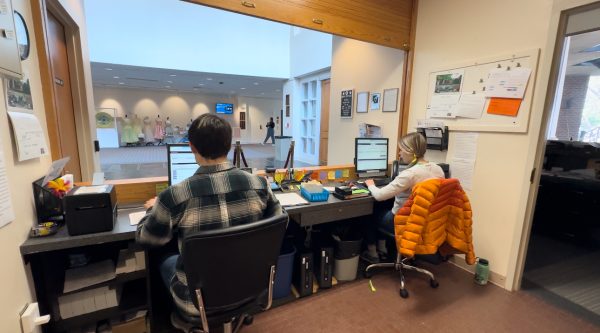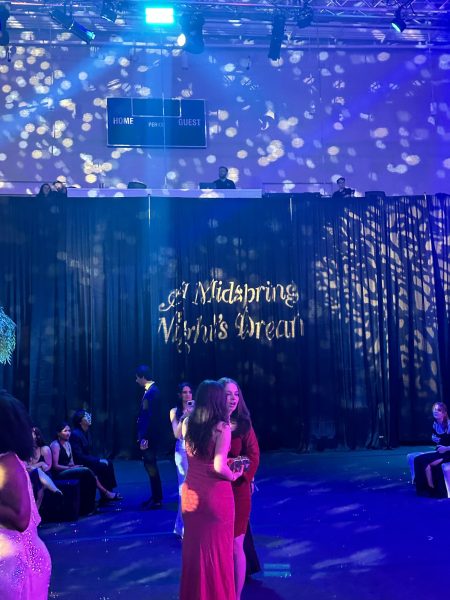Staniar Gallery displays exhibition with immigration focus
W&L art history class explores work created by native women from Oaxaca, Mexico
May 19, 2017
A new traveling exhibition displayed in Washington and Lee’s Staniar Gallery explores the issue of immigration through art by individuals with stories about crossing borders.
The compilation of works is entitled “New Codex Oaxaca: Immigration and Cultural Memory.” It explores immigration issues in today’s world through the lens of individuals who have experienced it firsthand.
The display, created by curator Marietta Bernstorff, includes works by not only contemporary artists, but also by native women from the rural Mexican village of San Francisco Tavinet, in the state of Oaxaca.
Oaxaca is a struggling Mexican state, suffering because many of its citizens have left for the U.S. They leave their families and community behind, creating voids that make life difficult for those left behind. Bernstorff set out to help the women of Oaxaca through art.
Bernstorff explained her mission was to aid the village women in becoming “self-reliant, confident and able to survive without relying on males” by bringing them into the art world and helping them earn their own money.
Bernstorff said she achieved this goal by bringing in various artists to mentor the Oaxacan women for just one day at a time. This allowed the women to “develop their own art language without being influenced by any one artist.”
During her time in Oaxaca, Bernstorff realized the prevalence of the immigration narrative in rural Mexican societies, which gave her the idea for the exhibition.
Bernstorff also included work in the exhibition from some of her own students at the Social and Public Art Resource Center, all of whom have a connection to an immigration story of their own, whether through a relative or personally.
Bernstorff explained that this style is effective because each piece tells a unique personal story. She said that the group “has a unique bond” through their shared experiences.
The exhibition correlates with Art History Professor Andrea Lepage’s spring term class, “Chicano/a and Latino/a Art and Muralism: From the Street to the (Staniar) Gallery.” The class is part of a bi- ennial tradition in which students study Chicano/a and Latino/a art through the lens of the current curation in Staniar Gallery.
“It’s one thing to hear numbers and statistics, but it’s another thing to hear real stories,” Lepage said. Students focus on the theme of community identity through “untrained artists” like the women of Oaxaca. The class provides a unique opportunity for immersion. The students spent two full days with Bernstorff, creating various in-depth projects, including interviews about each piece in the gallery.
Bernstorff feels the exhibition is important to the American community because it sheds light on a significant issue.
“Migration has historically been a societal factor,” Bernstorff said. “People move to survive, make things better for their children and escape war. But most importantly, they want their families to survive.”
Bernstorff hopes that those who view her exhibition will realize that they should be more accepting of immigrants in the U.S.
“The Earth is free,” she said. “Everyone should be allowed to move freely through it.”
Staniar Gallery Director Archer Lyle believes Bernstorff’s exhibition is effective.
“Art is a good way to talk about challenging issues because there is no right or wrong answer,” Lyle said.
The exhibit will be displayed on campus through May 26. After- ward, it will travel back to Oaxaca so that the women who contributed to it will be able to see their work on display.












